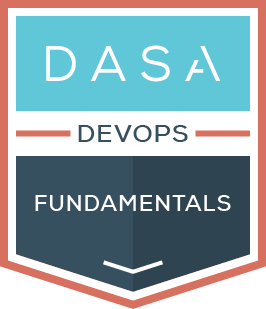One of the key success factors in Agile and DevOps transformation is the culture of the teams and the organization. However, since culture is intangible it is difficult to get a sense of whether you are getting culture right or wrong. So, instead of getting caught up prematurely in the minutiae of how to get culture right, we will define the target state culture and offer helpful advice on how to get to it, while acknowledging that each organization will have to carve it’s own path to target state culture.
And to do that – define target state culture and how to get to it – we turn to the highly acclaimed book – Lean Enterprise, How High-Performance Organizations Innovate at Scale, By Jez Humble, Barry O’Rielly, Joanne Molesky – a must-have reference book for anybody involved in Agile & DevOps transformation. ( By the way, Lean underpins both Agile & DevOps movements, and Agile and DevOps can be considered as a specific application of Lean in the IT context – the development, delivery, and operations of software products. )
In the book Lean Enterprise, the authors state:
“The key to creating a lean enterprise is to enable those doing the work to solve their customers’ problems in a way that is aligned with the strategy of the wider organization. To achieve this, we rely on people being able to make local decisions that are sound at a strategic level —which, in turn, relies critically on the flow of information, including feedback loops.”¹
¹Lean Enterprise, How High-Performance Organizations Innovate at Scale. by: Jez Humble, Barry O’Reilly, Joanne Molesky, Chapter 1 Introduction, Section: A Lean Enterprise is Primarily a Human System
The flow of information has been studied extensively by sociologist Ron Westrum in the context of safety in the medical field, and here is what he says about it.
“Because information flow is both influential and also indicative of other aspects of culture, it can be used to predict how organizations or parts of them will behave when trouble arises.”²
² A typology of organizational cultures, Ron Westrum
With the information flow defined by Ron Westrum as a proxy for the team and organizational culture, we can then use it to understand the type of information flow we currently have, and the target information flow we want to achieve, and how we get to the target state.
Based on how organizations handle the flow of information, Ron Westrum defined the following three organizational types:
Pathological organizations are characterized by large amounts of fear and threat. People often hoard information or withhold it for political reasons, or distort it to make themselves look better.
Bureaucratic organizations protect departments. Those in the department want to maintain their “turf,” insist on their own rules, and generally, do things by the book—their book.
Generative organizations focus on the mission. How do we accomplish our goal? Everything is subordinated to good performance, to doing what we are supposed to do.³
³Lean Enterprise, How High-Performance Organizations Innovate at Scala. by: Jez Humble, Barry O’Reilly, Joanne Molesky, Chapter 1 Introduction, Section: A Lean Enterprise is Primarily a Human System.
He further defined how each organizational type processes information.

Lean Enterprise, How High-Performance Organizations Innovate at Scale. by: Jez Humble, Barry O’Reilly, Joanne Molesky, Chapter 1 Introduction, Section: A Lean Enterprise is Primarily a Human System.
So, if the target state of Agile & DevOps transformation is to get IT teams to make ” local decisions that are sound at the strategic level”, we need to move from our current state culture to the target state culture – performance-oriented culture. And since culture follows structure, we need to redefine the way IT teams are structured as one of the initial steps in creating the right culture.
Historically IT teams have been organized based on functional specialization and as a consequence, the default culture is bureaucratic and rule oriented. In fact, the rai·son d’ê·tre as well as the rallying cry of the DevOps movement was to breakdown the bureaucratic wall between Dev and Ops.
So, to actually get to the target state of a performance-oriented culture, the structure of IT teams will have to change from the current functional based team structure to product based team structure. This doesn’t mean a massive reorganization has to happen – the functional departments remain, instead each IT product has it own autonomous, a multi-skilled team that has all the skills needed to manage the IT product and service from end to end – design, develop, deploy and operate. This is the type of product based team structure that Amazon popularized as ” You build it, You run it” teams.
The practical manifestation of this high performance, “You build it, You run it” culture is illustrated below.

Reference: DevOps fundamentals course book, Page 60, Core of DevOps culture.
And to help organizations transition from the current way of doing IT to the Agile & DevOps way of doing IT, DevOps Agile Skills Association, provides through its competence model the skills and knowledge teams require to become fully autonomous high-performance product based teams. Here is a synopsis of knowledge areas “You build it, You run it” teams require – Architecture and design, Business value optimization, Business Analysis, Test Specification, Programming, Continuous Delivery, Security, Risk, compliance, Infrastructure Engineering. ( Note: You could start by taking the competence quick scan to assess the current state of knowledge and skills of your teams and use it to build a target state road map)
The key takeaways
- Agile & DevOps transformation should result in ” teams being able to make local decisions that are strategically sound.”
- Culture follows structure – to move from bureaucratic to performance-oriented culture move from functional team structure to product based team structure.
- You build it, you run it – Guidance on how you set up highly, autonomous cross-functional product teams available at DASA and covered extensively in DASA’s DevOps fundamentals.


DASA DevOps Fundamentals
Provides an extensive introduction to the core agile DevOps principles covering the essential knowledge and skill competences that have been defined by DASA.

